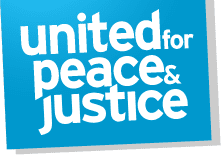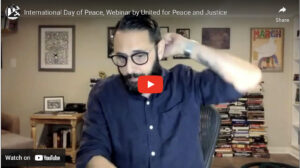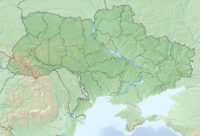
From the Korean Peninsula, to the South China Sea, to the Middle East and South Asia, all the nuclear-armed states are engaged in unpredictable conflicts that could catastrophically escalate out of control. Tensions between the United States and Russia have risen to levels not seen since the Cold War, with the two nuclear giants confronting each other in Ukraine, Eastern Europe, and Syria and an accelerated tempo of military exercises and war games, both conventional and nuclear, on both sides. Risky close encounters between Russian and U.S./NATO forces have increased dramatically in the Baltic region and Syria.
Ominously, all the nuclear-armed nations are engaged in a new nuclear arms race. Despite their animosities toward each other, they are united in opposition to the new Treaty on the Prohibition of Nuclear Weapons (TPNW or Ban Treaty), and the original nuclear-armed states are continuing to ignore their obligations under the 1970 Nuclear Nonproliferation Treaty to end the arms race at an early date and to negotiate “in good faith” the elimination of nuclear weapons.
Following the sudden end of the Cold War, after decades of difficulty in focusing attention on the crucial need for nuclear abolition, there are signs of a developing global nuclear abolition movement to respond to these dangers.
These include the July 2017 vote in the United Nations by 122 countries to adopt the Ban Treaty and the Nobel Peace Prize award to the International Campaign to Abolish Nuclear Weapons; the Don’t Bank on the Bomb Campaign; nonviolent direct acts of resistance such as the Memorial Day protest at Hanscom Air Force Base in Massachusetts and the April Kings Bay Plowshares Action; and unanimous adoption by the U.S. Conference of Mayors, in June, of a sweeping Mayors for Peace resolution “Calling on the Administration and Congress to Step Back From the Brink and Exercise Global Leadership in Preventing Nuclear War.”
Since 2006 UFPJ has declared August Nuclear Free Future Month. Let’s keep the momentum going!
Take action! August 6th and 9th will mark the 73rd anniversaries of the U.S. atomic bombings of Hiroshima and Nagasaki. Rallies, marches, vigils and nonviolent direct actions are planned across the country and around the world. Click here to find an action near you. Click here to find more actions, listed by date. Join any and all of these actions that you can!
Enroll your Mayor in Mayors for Peace! Mayors for Peace, founded in 1982 by the Mayors of Hiroshima and Nagasaki, is working for a world without nuclear weapons and safe and resilient cities as essential measures for the realization of lasting world peace. Mayors for Peace has grown to 7,632 cities in 163 countries, with 213 U.S. members, representing in total over one billion people. Mayors for Peace aims to reach 10,000 members by 2020, the 75th anniversary of the U.S. atomic bombings of Hiroshima and Nagasaki. Click here to find out if your Mayor is a member of Mayors for Peace. Click here to find out how to enroll your Mayor.
During the 1980’s, fear of nuclear war was by far the most visible issue of concern to the American public and people around the world. Yet following the end of the Cold War, nuclear weapons fell off the public’s radar screen. It was almost as if the planet itself breathed a huge sigh of relief.
Meanwhile, deeply embedded in the military-industrial complex, military planners and scientists at the nuclear weapons labs conjured up new justifications to sustain the nuclear weapons enterprise. Following the collapse of the Soviet Union, in 1991 Colin Powell, then-Chair of the U.S. Joint Chiefs of Staff, declared: “We no longer have the luxury of having a [specific] threat to plan for. What we plan for is that we’re a superpower. We are the major player on the world stage with responsibilities… [and] interests around the world.”
At its first national assembly in 2003, United for Peace and Justice (UFPJ) adopted a proposal put forward by Abolition 2000 member groups, to make nuclear abolition “a” priority. The proposal was adopted without much discussion or understanding. At the time we were focused on ending the Iraq and Afghanistan wars and nuclear weapons were seen by many as a peripheral issue. Over the years, nuclear weapons have moved from the periphery to the center of anti-war concerns and UFPJ’s work.
Today, nearly 15,000 nuclear weapons, most an order of magnitude more powerful than the U.S. atomic bombs that destroyed Hiroshima and Nagasaki— 92% held by the United States and Russia, continue to pose an intolerable threat to humanity. All of the nuclear-armed states are upgrading their nuclear arsenals, and the dangers of wars among them are growing.
On January 25, The Bulletin of the Atomic Scientists moved the hands of its symbolic Doomsday Clock 30 seconds closer to the end of humanity. It is now set at two minutes to midnight—as close as it’s ever been set since its inception in 1947. In moving the clock 30 seconds closer to the hour of the apocalypse, the Bulletin cited “the failure of President Trump and other world leaders to deal with looming threats of nuclear war and climate change”, and declared, “the world is as threatening as it has been since World War II.”
We stand at a nuclear crossroads, in a sharply divided world. Last July the majority of the world’s countries voted to adopt a historic treaty to prohibit the possession, development, testing, use and threat of use of nuclear weapons. While the Treaty on the Prohibition of Nuclear Weapons (TPNW) represents the total repudiation of nuclear weapons by most of the states that don’t possess them, the U.S. and the eight other nuclear-armed states, along with Japan, Australia, South Korea and all but one of the 28 NATO member states (The Netherlands) – all countries under the U.S. nuclear umbrella, boycotted the negotiations. (Click here for more information about the TPNW.)
We must keep both realities – the promise of the Ban Treaty and growing dangers of nuclear war – fully in mind as we urgently work for a world without nuclear weapons.
In June, the U.S. Conference of Mayors, (USCM), unanimously adopted a sweeping Mayors for Peace resolution “Calling on the Administration and Congress to Step Back From the Brink and Exercise Global Leadership in Preventing Nuclear War.” The resolution rejected the general hysteria that followed Trump’s meetings with Kim Jong-un and Vladimir Putin.
Make no mistake. Donald Trump is a dangerous unhinged megalomaniac, unfit for office, who is taking a wrecking ball to the domestic and international orders – to the detriment of millions of ordinary people. Yet, the hysteria following his meetings with Kim Jong-un and Vladimir Putin is truly frightening. Media pundits and Congressional leaders from both parties would apparently rather remain poised for nuclear war than risk talking with “the enemy”.
The USCM resolution also “urges the United States government to reverse its stance and to embrace the TPNW as a welcome step towards negotiation of a comprehensive agreement on the achievement and permanent maintenance of a world free of nuclear arms”, and “calls on the President and Congress to reverse federal spending priorities and to redirect funds currently allocated to nuclear weapons and unwarranted military spending to support safe and resilient cities….”, along with other measures.
Click here to read the complete text of the USCM resolution. This resolution is designed to be used by a number of campaigns currently underway, including Back from the Brink, Divest From the War Machine, and the Treaty Compliance Campaign. Circulate it widely as an educational and advocacy tool. Quote it in op-eds and letters to the editor. Send it to your Congressional representatives. Consider asking your City Council to endorse the resolution. For more information contact Mayors for Peace North American Coordinator, Jackie Cabasso at wslf(at)earthink.net.


